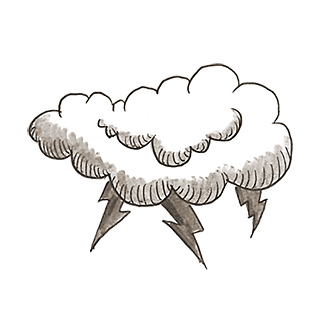
Related Questions
- How do birds sit on high-voltage power lines without getting electrocuted?
- Can we calculate the efficiency of a natural photosynthesis process?
- What happens to electricity when nothing is plugged into an outlet?
- What is a short circuit?
- What’s the difference between AC and DC?
- What’s the difference between fuel efficiency and fuel economy?
- Which engine is better at high altitude: diesel or gasoline?
- How can solar cells become cost-effective enough to be commercially viable?
- Why do the products of a nuclear fission reaction in uranium have three neutrons but not three protons?
- What is “clean” coal?
Can sound be converted to useful energy?
The loudest sounds you can stand actually don’t have much energy in them…
By Sarah JensenStand next to the entrance ramp of a busy freeway at rush hour or walk into an American Eagle clothing store and the first thing you’ll notice is the noise. The din can seem deafening, and it’s tempting to imagine channeling that sound energy into a way to power streetlights and electric cars — or at least to charge your smartphone.
“There is definitely energy contained in that sound,” says David Cohen-Tanugi, vice president of the MIT Energy Club and a John S. Hennessy Fellow in MIT’s Department of Materials Science and Engineering. “But the density of the energy is very low, and there is no way to capture it all. You’d have to have obscenely loud, continuous noise for harvesting to be worthwhile.”
What the human ear perceives as clanging cacophony — the roar of a train engine or the whine of a pneumatic drill — only translates to about a hundredth of a watt per square meter. In contrast, the amount of sunlight hitting a given spot on the earth is about 680 watts per meter squared. “That’s many orders of magnitude more,” explains Cohen-Tanugi. “That’s why it’s more efficient to collect and store sunlight using solar panels than to harvest energy from sound. And the energy density in oil and gas is orders and orders of magnitude higher, making generating power from those sources, even more, cost effective.”
That’s not to say researchers aren’t examining ways to transfer environmental noise into electrical energy. Passing trains and subways aren’t only loud, but their surroundings rattle and vibrate as they pass, and part of the thrill of a rock concert is feeling the whole auditorium shake. “There’s a strong interplay between vibrations through the medium that you hear through — air or water — and the physical objects around you,” says Cohen-Tanugi. “It’s perfectly conceivable to absorb that movement and glean useable energy. You’re not going to power a city with it, but you can power small devices.”
He cites the work of London-based Facility: Innovate, an architectural research firm investigating ways to convert environmental vibrations into electricity. As crowds walk through malls, sports arenas, and other high-traffic areas, small hydraulic generators beneath the company’s floor tiles capture the vibrations of their steps — and generate enough electricity to power nearby phone-charging stations and illuminate electronic signage and advertising.
Though still in the research phase, such technology could mean a new era in energy generation and conservation. “Harvesting acoustic noise is more about mechanical vibrations than sound itself,” says Cohen-Tanugi. “The idea is definitely there, and it’s quite promising.”
Thanks to Sateesh Smart, a 20-year-old from India, for this question.
Posted: November 15, 2011